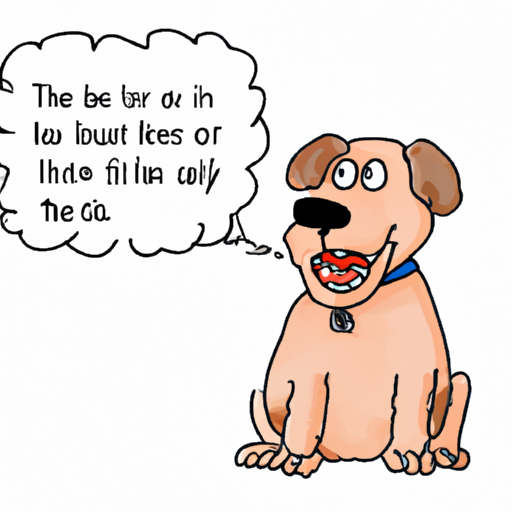As a caregiver, it’s essential to understand the laws and regulations that pertain to the care and ownership of dogs. One of these legal concepts is the “One-Bite Rule”. This rule deals with the responsibility of dog owners in the event that their dog bites someone.
Table of Contents
- Understanding the One-Bite Rule
- The Origin of the Rule
- States that Follow the Rule
- Exceptions to the Rule
- Implications for Dog Owners
- Frequently Asked Questions
Key Takeaways
- The One-Bite Rule is a legal doctrine that holds dog owners responsible for an injury caused by their dog if they knew or should have known that their dog was likely to cause that type of injury.
- This rule originated from English common law.
- Not all states follow this rule; some states have strict liability dog-bite laws instead.
- There are exceptions to the One-Bite Rule, such as when the owner is negligent or violates an animal control law.
- As a caregiver, it’s crucial to understand your responsibilities and liabilities concerning dog bites.
Understanding the One-Bite Rule
The One-Bite Rule is a legal doctrine that exists in some areas of the United States. It essentially states that a dog owner cannot be held liable for injuries caused by their dog biting someone if it’s the first time the dog has shown aggressive behavior. In other words, the owner would not be held responsible unless they had reason to believe that the dog was likely to bite. The rule gets its name from the idea that a dog gets ‘one free bite’ before the owner can be held liable for any injuries the dog causes.
This rule is not without controversy, and it’s not followed in all states. The majority of states have moved towards strict liability dog-bite laws. These laws hold dog owners responsible for any injury that their dog causes, regardless of whether or not the dog has previously shown aggressive behavior. It’s important to be aware of the laws in your state, and this link provides a comprehensive overview of the dog bite laws in each state.
The Origin of the Rule
The One-Bite Rule originated from English common law. It was based on the understanding that domestic animals are generally harmless. The rule assumes that a dog owner would not know their dog is dangerous until it bites someone. Once the dog has bitten someone, the owner is then considered aware of the danger the dog poses, and is held responsible for any subsequent bites.
States that Follow the Rule
While the One-Bite Rule was once the norm throughout the United States, many states have moved away from this rule in favor of strict liability laws. However, some states still adhere to the One-Bite Rule. These states include:
- Arkansas
- Delaware
- Georgia
- Idaho
- Kansas
- Maryland
- Mississippi
- Nevada
- New Mexico
- North Dakota
- Oregon
- South Dakota
- Texas
- Vermont
- Virginia
- Wyoming
Exceptions to the Rule
There are exceptions to the One-Bite Rule, even in states that follow it. If the dog owner was negligent or violated an animal control law, they could still be held liable for injuries caused by their dog, even if it’s the dog’s first time biting someone. For example, if a dog is known to chase people or act aggressively, and the owner did nothing to control the dog, the owner could be held liable if the dog bites someone.
Implications for Dog Owners
As a dog owner, it’s essential to understand your responsibilities and potential liabilities. If you live in a state that follows the One-Bite Rule, you may not be held liable if your dog bites someone, provided it’s the first time. However, this does not mean that you can be careless with your dog. As a responsible dog owner, you should always take steps to prevent any injuries that your dog could cause.
The One-Bite Rule emphasizes the importance of responsible dog ownership, as highlighted by this article on OneTopDog. Training your dog, keeping it under control, and understanding its behavior are all crucial aspects of responsible dog ownership.
Frequently Asked Questions
1. What is the One-Bite Rule?
The One-Bite Rule is a legal doctrine that states that a dog owner cannot be held liable for injuries caused by their dog biting someone if it’s the first time the dog has shown aggressive behavior.
2. Do all states follow the One-Bite Rule?
No, not all states follow the One-Bite Rule. Many states have moved towards strict liability dog-bite laws.
3. What are strict liability dog-bite laws?
Strict liability dog-bite laws hold dog owners responsible for any injury that their dog causes, regardless of whether or not the dog has previously shown aggressive behavior.
4. Are there exceptions to the One-Bite Rule?
Yes, there are exceptions to the One-Bite Rule. If the dog owner was negligent or violated an animal control law, they could still be held liable for injuries caused by their dog, even if it’s the dog’s first time biting someone.
In conclusion, understanding the One-Bite Rule and the corresponding laws in your state is an important aspect of responsible dog ownership. As a caregiver, ensuring the safety of those around your pet should always be a top priority. For more insights into responsible pet ownership, visit OneTopDog.



